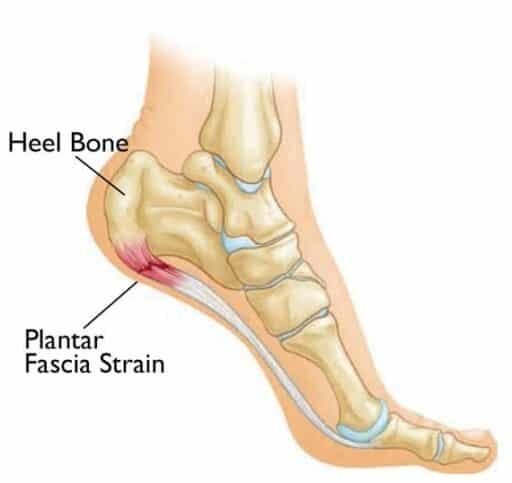How much good are those couple of weekend sessions really doing our members and clients?
Title: Association of “Weekend Warrior” and Other Leisure Time Physical Activity Patterns With Risks for All-Cause, Cardiovascular Disease, and Cancer Mortality.
Authors: Dr’s O’Donovan and colleagues. (School of Sport, Exercise and Health Sciences, Loughborough, UK)
Source: Journal of the American Medical Association (2017)
 Introduction: For many years now we have lectured to students about the importance of prescribing established guidelines to the patients/clients with regard to the ‘dose’ of physical activity/exercise. One of the most common guidelines is from the American College of Sports Medicine (ACSM)/American Heart Association recommending 30 minutes of moderately intense aerobic exercise five days per week (i.e. at least 150 minutes of moderate intensity cardio exercise each week) or 20 minutes of vigorous intensity exercise for three days a week.
Introduction: For many years now we have lectured to students about the importance of prescribing established guidelines to the patients/clients with regard to the ‘dose’ of physical activity/exercise. One of the most common guidelines is from the American College of Sports Medicine (ACSM)/American Heart Association recommending 30 minutes of moderately intense aerobic exercise five days per week (i.e. at least 150 minutes of moderate intensity cardio exercise each week) or 20 minutes of vigorous intensity exercise for three days a week.
These guidelines also recommend 8 to 10 strength training exercises of 8 to 12 reps for each exercise twice per week. This ‘dose’ of physical activity is associated with a number of health benefits, such as delayed all-cause mortality, decreased risk of developing heart disease, cerebrovascular disease, type 2 diabetes mellitus and a number of cancers… to name just a few.
Another common guideline that the students learn about is the American Diabetes Association’s guidelines for physical activity and type 2 diabetes, which recommends (similar to the ACSM) 150 minutes of physical activity each week, however not allowing more than two consecutive days to elapse between exercise sessions. It is important to note that these two guidelines are recommending three or more days per week of exercise, depending upon intensity.
These guidelines are pretty straightforward and easy for students to learn: their application in clinical practice, however, can be quite challenging. When teaching, we utilise problem-based learning (PBL) which is a student-centred style in which students are self-directed, independent and interdependent to solve a problem. We utilise case studies in PBL as they are especially effective for teaching clinical exercise physiology and one popular/relative to this Research Review is the patient/client who is (for example) a cab driver who is married with two young children, working full time plus (i.e. six days each week) from 5:30am to 7pm most days. The students are asked how they would apply the ACSM guidelines with this particular case, especially with regards to exercising ‘most days of the week’.
In clinical practice, we see quite a number of patients/clients who are working long days with perhaps only the weekend free and available for physical activity/exercise. We continually try to find time management strategies for these individuals so they can attain the recommended dose of exercise, but in reality they are only exercising on weekends at best, making them the sometimes maligned ‘Weekend Warriors’.
Methods: Dr O’Donovan and his colleagues were interested in investigating the health benefits, if any, in Weekend Warriors (i.e. reporting <150 min/week in moderate-intensity or <75 min/week in vigorous-intensity activities from 1 or 2 sessions) compared to Inactive individuals (i.e. no moderate or vigorous physical activity/exercise), Insufficiently Active individuals (i.e. <150 min/week in moderate-intensity and <75 min/week in vigorous-intensity) and those who are Regularly Active (i.e. reporting >150min/week in moderate-intensity or >75 min/week in vigorous-intensity activities from >3 sessions). The investigators utilised existing data from both the Health Survey for England and the Scottish Health Survey. These are household-based surveillance studies where the participants are considered to be representative of the target populations of the countries.
 Results: Approximately 63,000 adults aged 40 and older participated in this study, approximately half of which were male with an average age of 59. With regard to groups, the majority (63 per cent) were classified as Inactive at baseline, followed by 22 per cent Insufficiently Active, 11 per cent Regularly Active and only 4 per cent as Weekend Warriors.
Results: Approximately 63,000 adults aged 40 and older participated in this study, approximately half of which were male with an average age of 59. With regard to groups, the majority (63 per cent) were classified as Inactive at baseline, followed by 22 per cent Insufficiently Active, 11 per cent Regularly Active and only 4 per cent as Weekend Warriors.
The Weekend Warriors were on average 52 years of age, half never smoked, a third were ex-smokers and average body mass index was 27kg/m2 (overweight). The Inactive participants were generally older, smokers and had a higher proportion of chronic illnesses. Of the Weekend Warriors, 45 per cent exercised only one day per week, with the remaining 55 per cent exercising two days per week. The most popular mode of physical activity/exercise was walking (brisk or fast pace) and they spent approximately 300 minutes per week completing moderate or vigorous exercise, whereas the Regularly Active were completing approximately 450 minutes each week (125 minutes of vigorous intensity).
The Inactive group had the highest all-cause mortality, and risk for cardiovascular disease and cancer, while the Regularly Active had the lowest.
Conclusions: The results showed a benefit for all of the active groups, even if they were Insufficiently Active. More importantly, there now appears to be a health benefit (i.e. reduced risk) to Weekend Warriors who completed only one or two exercise sessions per week. The authors concluded that Weekend Warriors reduced their all-cause mortality and risk for heart disease and cancer.
Pros: This is actually the second article which has investigated the health benefits of Weekend Warriors. Lee and his colleagues completed a similar study in 2004, but with a much smaller sample size (~ 8,000 men). It is promising to see similar findings in the O’Donovan study, as it lends further credence to the benefits associated with Weekend Warrior exercise attributes. Additionally, these findings give clinicians, personal trainers and fitness enthusiasts confidence that there are health benefits associated with Weekend Warrior exercise.
Cons: As the participants were evenly distributed between genders, it would have been interesting to see if there were any differences in risk between genders.
Associate Professor Mike Climstein, PhD FASMF FACSM FAAESS is one of Australia’s leading Accredited Exercise Physiologists and researchers. He is director of chronic disease rehabilitation at Vale Medical Practice. mike.climstein@sydney.edu.au
Joe Walsh, MSc is a sport and exercise scientist. As well as working for Charles Darwin and Bond Universities, he is a director of Fitness Clinic in Five Dock, Sydney. fitnessclinic.com.au


